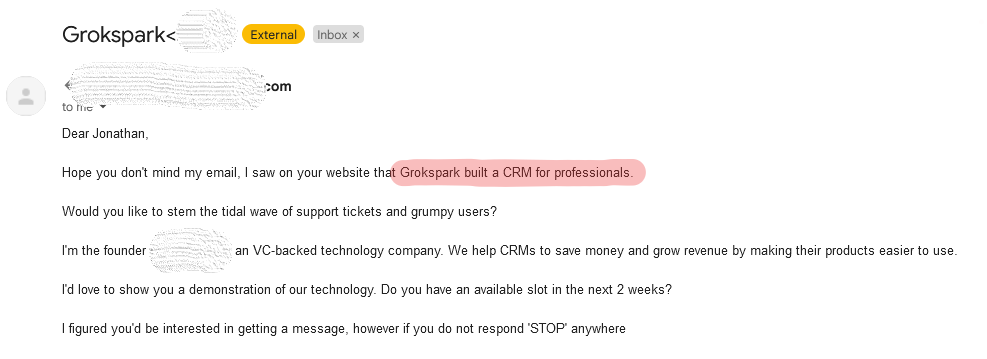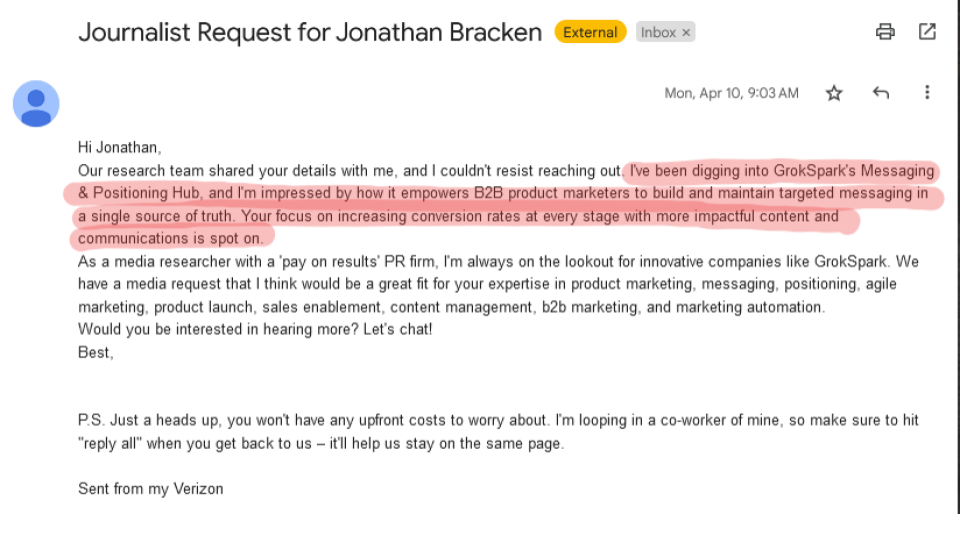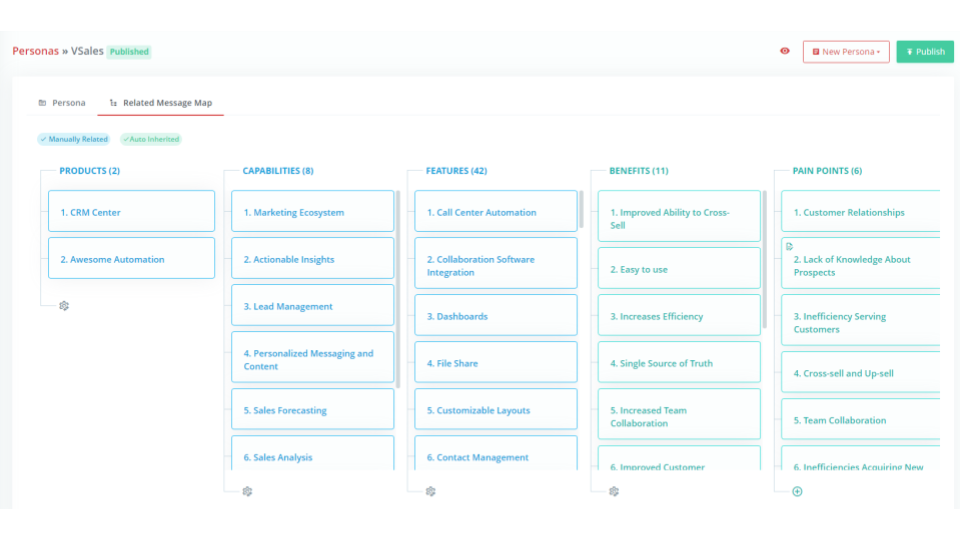
“Personalized” Content is Trash. Contextualized Content is Cash.
Jonathan Bracken
Introduction
In competitive B2B software markets, personalization has become a key component in successful marketing and sales strategies. Customers expect tailored experiences just like they get as consumers from B2C companies. While effective personalization can lead to higher engagement, conversions, and customer satisfaction, many software companies miss the mark when it comes to the tactics they use. In this blog post, we will explore the common mistakes people make and what companies still get wrong with their personalization strategy. We’ll dig into the tactics that make “personalized” content trash and contextualized content cash in your marketing and sales efforts.
Common Tactics Used in Personalization
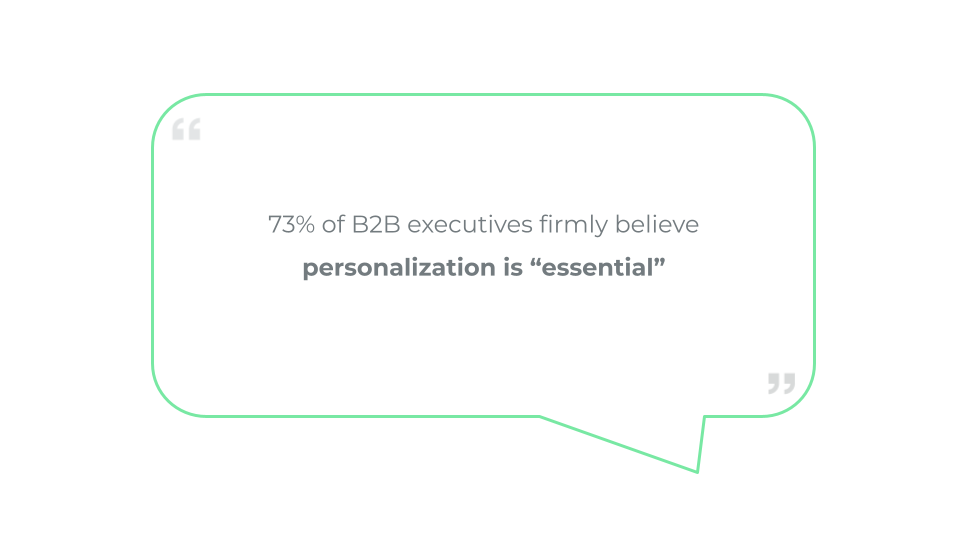
Most agree that personalization is important. Additionally, most companies seem to agree on the tactics they choose when implementing their personalization strategies:
- Utilizing personal data to customize buyer communications and
- Leveraging intent data to determine the best time to reach out to potential buyers.
Using personal data, such as demographics and history (often from LinkedIn pages), allows companies to tailor their communications for individual buyers. By understanding the buyer’s background software companies can create highly targeted introductory messages to capture the attention of the recipient.
However, once the attention has been captured, the offer needs to be tailored to the needs of the buyer otherwise the initial impression that the sender actually knows something about how to help the buyer is shattered. My inbox is filled with examples of personalization attempts that undermine the credibility of the sender by trying (unsuccessfully) to suggest they know me or my business. Grabbing information from my company’s website to stuff into a “personalized” email is a common unsuccessful approach.
This email above lost me right from the first line where they suggested from “our website” that we built a CRM for professionals. Nope…not even close. So it doesn’t really matter what they say next because I won’t be interested enough to continue.
This one is a bit better, but clearly they just copied from our website about what GrokSpark does and then said they are “impressed” about it. Again it lacks anything compelling in the personalization to actually make me think they understand our challenges and can do something to help us solve them.
The other common personalization approach companies take is to use intent data to identify when a potential buyer is displaying buying behavior. This data often includes actions like visiting specific pages, downloading resources, or engaging with certain content. Leveraging this information helps software companies reach out to potential buyers at the right time, increasing the chances of conversion. While this is a good approach to help get the timing right for delivering your message, it doesn’t help you make your messaging more personal for each buyer.
The Missing Piece: Contextual Relevance
While utilizing personal and intent data are useful tactics to gain the initial attention of your audience, they miss the most powerful aspect of personalization: Contextual messaging. This tactic is about providing a subset of messaging that is contextually relevant to the buyer. This is particularly important in the software industry which is rife with complexity. Even small companies with a single product often have multiple use cases, target audiences and, of course, a bunch of features. And for companies with more than one product, the complexity grows exponentially presenting an even greater challenge. Buyers just don’t have the luxury of time (or patience) to sift through extensive messaging to find the subset that resonates with them. Instead, they won’t “get” the message and will move on to your competitors. In fact, Gartner says 34% of buyers say they disqualify vendors due to “confusing/ contradictory information material”.
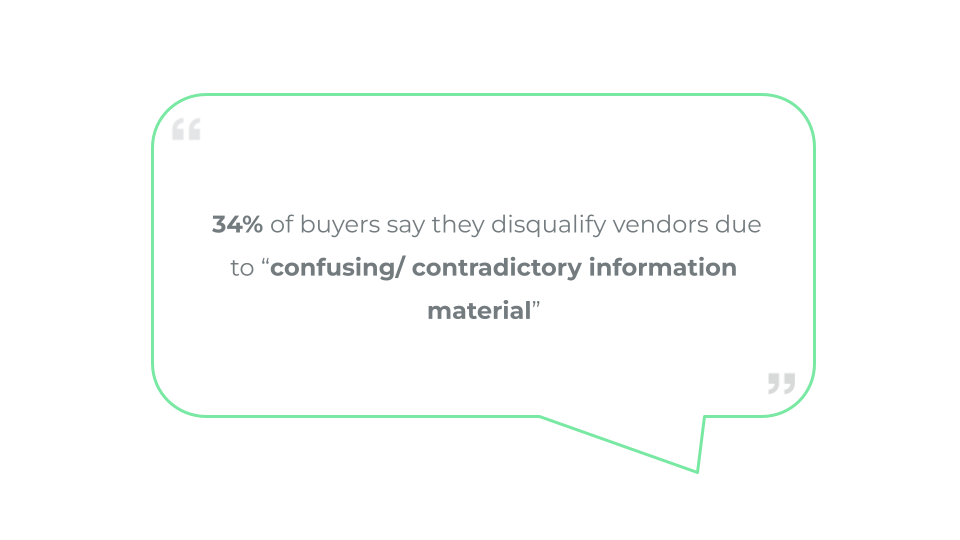
The good news is that organizing your messaging to enable contextual relevance is fairly straightforward. In fact, this form of personalization is the most efficient and effective way to personalize your messaging.
Segment Your Messaging for Relevance
To address the challenge of contextual relevance, it is essential to segment messaging so that it is easily accessible and relevant to each audience. This includes considering factors such as persona, industry, use case, and pain points. Companies must ensure that buyers can clearly see how their products can specifically address the pain points and provide distinct benefits to each buyer. By highlighting the key capabilities, features, and benefits that are relevant to each audience, software companies can effectively showcase their value proposition in a way that allows buyers to connect the dots in their understanding about how it could work for them.
For example, instead of bombarding potential buyers with generic emails containing personal details, it is more impactful to present a succinct overview of how the software can alleviate their pain points and provide tailored solutions. By organizing messaging according to buyer segments, both sales and marketing teams can easily identify the specific subset of messaging that resonates with their target audience.
Benefits of Contextually Relevant Messaging
Providing contextually relevant messaging has several benefits for software companies. Firstly, it streamlines the decision-making process for buyers by presenting them with precisely what they need to know. Instead of overwhelming them with excessive information, companies can focus on the key capabilities and features that align with their specific requirements.
Secondly, contextually relevant messaging helps establish credibility and trust. By demonstrating a deep understanding of the buyer’s challenges and offering tailored solutions, software companies position themselves as trusted advisors rather than simple vendors. This builds confidence in the buyer’s mind and increases the likelihood of conversion.
Lastly, personalized and relevant messaging creates a positive overall experience for buyers. When they feel understood and valued, they are more likely to engage with the company, explore additional offerings, and become long-term customers.
Implementing Contextual Relevance in Your Strategy
To implement contextual relevance in your personalization strategy, consider the following steps:
- Identify your target audience segments: Understand the different buyer personas, industries, use cases, and pain points that your software caters to.
- Map your messaging: Create a messaging framework that aligns specific subsets of messaging with each audience segment. Clearly define the key capabilities, features, and benefits of your software that address their pain points. (see this post for more on message maps)
- Centralize your messaging: Create a single place to maintain your messaging and embed the subsets of messaging where your users work. Tools can help, but consider spreadsheets, airtable or messaging enablement platforms as potential solutions.
- Activate your teams: Ensure that everyone in your sales and marketing (and any other customer-facing) teams has access to this messaging “hub”. Train them on how to effectively use contextualized messages to engage with potential buyers.
- Establish processes: Create clear processes for publishing and communicating messaging changes across teams and include the audit and updating of affected content.
Note that the email does not include the benefits and features that are designed for marketing or support audiences, but instead focuses on what the VP Sales persona cares most about as defined in the message map for that persona. A sales or marketing email that explains the problem it solves, provides the product proof by explaining how it solves it and then even gives the relevant customer testimonial is the right way to personalize.
Conclusion
Personalization in marketing and sales is crucial for software companies to get ahead in today’s competitive landscape. However, many companies miss the mark by solely relying on personal and intent data. True personalization lies in providing a subset of messaging that is contextually relevant to each buyer, addressing their pain points and offering tailored solutions. By segmenting messaging and clearly highlighting the specific capabilities, features, and benefits that align with each audience segment, software companies can create a positive and engaging experience, ultimately leading to higher conversions, customer satisfaction, and business growth.
